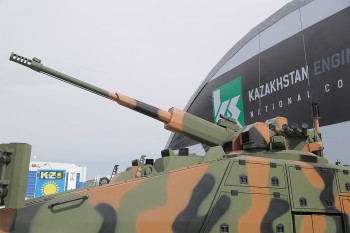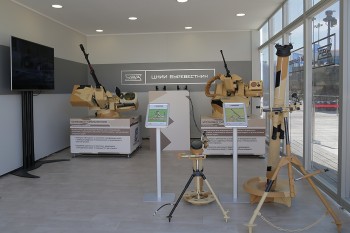Thx Ausitin for info.

In fact I suspect for a long time ago Russia -as China, North Korea- was developing a new cheap 57 mm air defence with new guidance. Like as we've talked laser, and a new to track enemies aircraft without they are aware, like a kind of IRST. Moreover the secret is in its future ammunitions.
Here is the ammunition of the of S-60 APHE-T Armour Penetrator High Explosive Tracer

Here is the He-T : High Explosive Tracer

The best must be the APHE-T as it could penetrate the armour of the aircraft, and explode its high explosive content, it must be devastating. For that reason, I suspect the effective range is around 5-6.000 meters, other than 1.500 meters as they said in FAS. If the new S-60 contained a new guided ammunition it will deter any bombardment below 8.000 meters. The He-T ammunition in Vietnam hampered US air campaign, as in order to flee, or to avoid the huge losses US were obliged to fly above 6.000 meters and to bomb, but in this altitude, the effectiveness was aleatory. If Russia developed a new revolutionary S-60, it could be a severe blow to US. If you have more info about the future ammunitions, guidance, the altitude range please let us know.
My ref source-if you have others, please let's know-
http://www.russianammo.org/Russian_Ammunition_Page_57mm.html#27
57x348SR 57mm Russian S-60 AAA
This gun, the M1950, was introduced in the late 50s and is basically referred to as S-60 anti aircraft gun.
It is a medium range recoil operated cannon and replaced the earlier 37mm AA weapons almoust throughout the Warsaw Pact.
Considering the design of the gun, Soviet engineers must have studied the wartime German "5,5cm Geraet 58" AAA. The weight of the S-60 was 4,6 tons and it had a 4160mm long barrel with destinctive muzzle break and downfoldable shield. The S-60 gun is fixed to a four wheel carriage and it was also used against light armored ground vehicles in the ground support role. A S-60 battery generally consists of six guns, a fire-control radar, and a fire-control director. The earliest versions had a PUAZO-5 fire-control director and a SON-4 radar, however, improved director/radar combinations were used in subsequent years.
The ammunition is fed in 4-round clips into the gun, the rate of fire was 105 to 120rpm, range was 6000m with radar guidance, 4000m with optical sights.
China also built its version of the S-60 and called it Type 59 anti aircraft gun.
A self propelled version of the Russian gun, the ZSU-57-2 had a double barrel cannon designated S-68 mounted on a modified T-54 fuselage. It was introduced in 1957 and has basically the same characteristics as its single barrel brother, however, the ZSU-57-2 was not radar guided. The self propelled AA gun had 316 rounds of ammunition storage on board and is now considered as obsolete and was replaced by SAM systems arround 1980. China called its self propelled guns Type 80.
The AK-725 AA gun was the Naval version of the S-60 gun and was introduced in 1958. It was mounted in single, double and quadruple mounts designated ZIF-31on many early destroyers.
Elevation was 0/+90°, the mount could be turnt 360° around.
The ZIF-72 Naval AA gun was enclosed in a metal housing and fully automatic. It was a double barrel mount with water cooled barrels, it was also exported to India. The ZIF-72 was introduced in mid 1970 and was also a recoil operated weapon but ammunition was fed in belts, its overall weigth is 25 tons. Elevation was -10/+90°, the mount could be turnt 360° around.
The S-60 type of guns were widely used in all RFAS states, it also was the main small AA gun of the North Vietnamese army. They may still be in use in the former Yugoslavia and the Middle East.
The HE-T shells have a blunt ogive shape and a long burning (about 12 sec.) No. 8 tracer element. A single large gilding metal driving band is fitted that has pronounced grooves. Cartridge cases are brass, silicon-brass or steel, those made of silicon-brass have the letter "K" imprinted in the headstamp.
The UOR-281U high explosive fragmentation shell is filled with 154g A-IX-2 high explosive and has a MG-57 or MG3-57 delay self-destruction fuze and a tracer base screw fitted. It is lacquered olive drab with black lettering. The UBR-281U is a steel shot with a breaker cap and a ballistic windshield cap, the base is filled with 13g
A-IX-2 high explosive and has a MD-10 delay base fuze with tracer No. 2 fitted. It is lacquered dark gray and has black lettering. The AP shells may not be used against airborne targets, only on light and medium armored tanks and are effective only up to 1500m. Rounds UOR-281 and UBR-281 (without letter U) have the same shell, but have a thinner case mouth and shallower swage grooves.
The UBR-281 shell may also only have one swage groove and the UOR-281 shell may only be swaged with the above swage groove to the cartridge case.
The UOR-281U-IN is basically the same as the UOR-281U but filled inert and with a dummy fuze. This practice shell is painted black above the bourrelet and gray below and has white lettering and the word "INERT" painted on in Russian.
The UBR-281U-IN is basically the same as the UBR-281U but filled inert and with a dummy fuze. This practice shell is painted black above the bourrelet and gray below and has white lettering and the word "INERT" painted on in Russian.
All cartridges above have a propellant charge of 1180g of 11/7 smokeless powder and a KV-5 or KV-5-U percussion primer screw, maximum chamber pressure is 3100 kp/cm².
If a shell is stuck in the barrel, a shortened cartridge case may be used to shoot the barrel free. The mouth of an empty cartridge case is cut by 30 to 35mm and loaded with 75% of the standard propellant charge which is fixed by a piece of cardboard.
The MK-281 blank round has a charge of 560g of 4/1 blank-cartridge-powder.
A proove cartridge with water filled substitute projectile is used as well.
Inert drill rounds are used as well, the inert shell is fixed with a steel rod to the base of the cartridge case. The round has the same appearance and weight as life rounds but is lettered for identification.
5 rounds are packed in a gray-green lacquered wooden box that measures 650x580x210mm and weights 49kg. Ammunition is/was manufactured by Bulgaria, China, former Czech Republic, Egypt, Yugoslavia, Poland and Russia. Early Russian cases and newer Polish cases can be made of steel as well, cases of Silicon-brass were used as well.
Ammunition used in these guns:
USSR Designation US Abbreviation Bullet Weight [g] Muzzle Velocity [m/s] Description
UOR-281 HE-T
2850
1000
Fragmentation shell
UOR-281U HE-T 2850 1000 Fragmentation shell
UBR-281 APHE-T
2820
1000
With ballistic cap, high explosive charge in base, base fuze with tracer
UBR-281U APHE-T 2820 1000 With ballistic cap, high explosive charge in base, base fuze with tracer
UOR-281U-IN TP-T
2850
1000
Inert filled practice shell, like HET
UBR-281U-IN TP-T
2820
1000
Inert filled practice shell, like APHET
MK-281 Blank
/
/
Truncated cartridge case
















